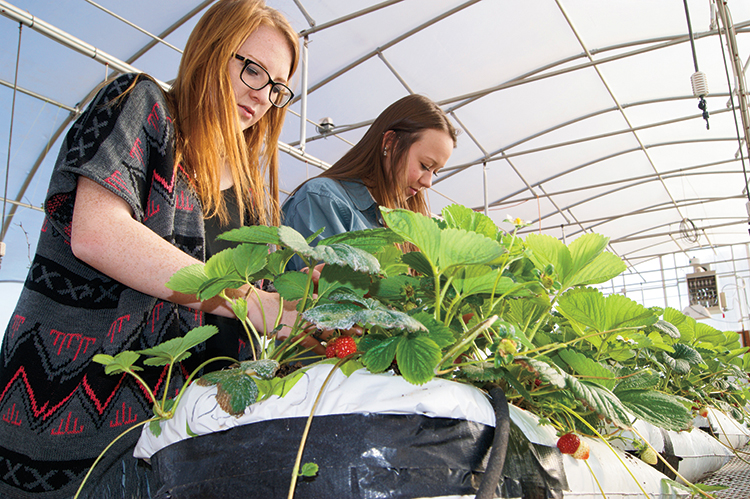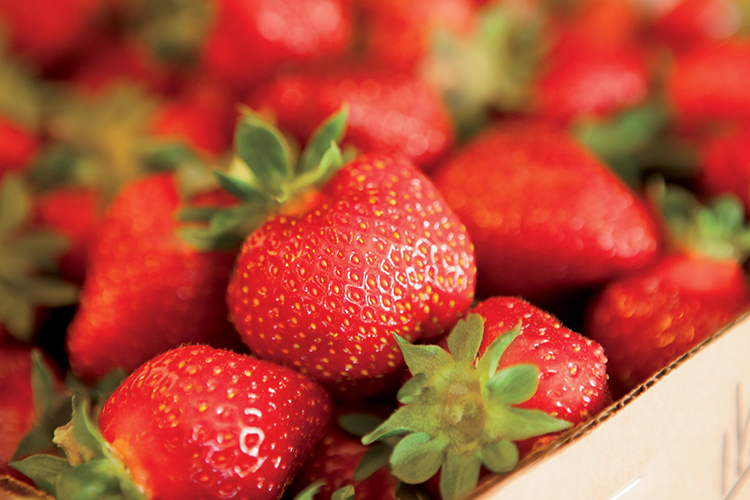Home > Texas > Texas Ag Education > Surprising Strawberries for a Texas FFA Member
Surprising Strawberries for a Texas FFA Member
In partnership with: Texas Department of Agriculture

The dry heat and dusty fields of Texas aren’t the ideal place to grow strawberries. You will typically find the berries growing in sandy loam soil. Courtney Adams and Aubrey Waggoner, pictured, had never worked on a plant-based supervised agriculture experience before, but their Lubbock-Cooper FFA advisor, Kyle Pate, encouraged them to try an experiment outside of their comfort zone. That’s where the strawberries come into play.
The students worked with Pate to create an experiment testing the effects of various liquid and time- release fertilizers on the growth of strawberry plants in a climate- controlled environment.
“We had 18 bags of soil and put six seeds in each bag,” Adams says. “We took the soil out of every bag and either mixed it or aerated it, so that they all started with the same ‘fluffed’ soil.”
Adams and Waggoner then began a 10-week experiment, tracking the number of leaves, flowers and fruit produced, while also weighing harvested berries to determine the effectiveness of producing healthy and viable fruit. The experiment tested five variations of liquid and time-release fertilizers.

Despite having a fertilizer “win” for their experiment, the girls weren’t convinced the investment in fertilizer was worth the strawberry percentage yield increase over the controlled counterpart.
“I was surprised by how well our control plants performed with no fertilizer,” Adams says. “It produced the best and biggest fruit beside the one balanced fertilizer, which barely beat it. I would be interested to see how well the two variations perform against each other on a larger scale.”
The pair competed at both the state and national FFA agriscience fairs, placing first and second respectively in their division.
“We produced a solid experiment,” says Waggoner. “We couldn’t have done it without the time and dedication of our advisor, Mr. Pate. He really helped us make a great experiment.”
The girls were thrilled to talk about next steps with experiments spinning off the results of this initial round.
“I’m already testing the winning fertilizer with different percentages applied to the soil to see what amount produces the most yield,” Waggoner says. “I want to find the best economic combination for farmers to produce the best strawberries. Plus, it doesn’t hurt that our strawberries are much better than store-bought.”



